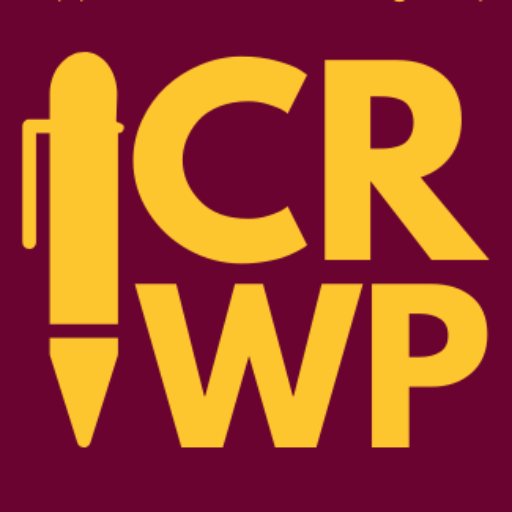After months of research and soul-searching, I’ve come to the realization that I can’t use the terminology of “close reading” in my classes any longer. This has been a long journey for me, as I’ve tried to understand what “close reading” is or should be, and I’ve grown to believe that whatever it is, it is simply not enough. Close reading is only one part of an overall set of critical reading skills that we should be teaching and modeling in our classrooms.
I was first introduced to the buzzword “Close Reading” at an ISD workshop back in 2011, as they were rolling out the Common Core for our county. During the workshop, we ELA teachers watched an address to DC public schools on “Close Reading” by David Coleman (architect of the Common Core). I was decidedly irritated. Having already rewritten and aligned my curriculum to the Michigan Benchmarks, and later to the High School Content Expectations, I wasn’t really on board with rewriting everything, again, because of decisions made by yet another educational expert who never spent time in the classroom. And now, I was being told by Mr. Coleman that the author’s context and the reader’s response should not be part of the initial discussion of a text. No longer should I use pre-reading strategies, predictions, or mini-lessons; no longer should I encourage the students to make personal connections with the reading; the meaning in the literature would reveal itself, through the magic of “Close Reading” and my ability to structure my instruction with effective questions, thereby leading the students to the correct interpretation.
I pushed back against Coleman’s advice, knowing that my students needed to understand the context in order to understand the purpose; my students craved the opportunities for making connections between their world and the world of literature every single day; my students were not passively waiting for knowledge they would gain from my “sage on the stage” expert questioning techniques. So, I begrudgingly aligned my curriculum maps to the Common Core Standards, and then closed my classroom door and continued teaching literature the way I knew how, with all the tried and true strategies I’d used throughout the years.
But the “Close Reading” buzz never went away. In my district, it wormed its way into our department conversations, onto our graphic organizers, and into our day-to-day instruction. We were all doing “Close Reading.” At least, that’s what we thought we were doing.

And then, a year ago, in a department meeting, we each described what “Close Reading” was, and what it looked like in our classrooms. And it suddenly became glaringly obvious that none of us was doing the same thing. “Close Reading” in my classroom meant daily quote analysis from the reading assigned the day before; “Close Reading” in the classroom next door meant reading aloud to students and stopping to discuss; “Close Reading” in lower grades meant mapping ideas and journaling connections; my Michigan State University interns, coming in fresh from their own EDU and ENG undergrad classes, built beautiful and tortured graphic organizers entitled “Close Reading” that students filled out as they read. None of it looked anything like David Coleman’s pretend classroom.
In discussions with my 2015 CRWP colleagues, I used the term “Close Reading” to describe how I wanted my students to approach all texts, whether they were traditional literature pieces or online blogs, articles, and commercial sites. One colleague interjected: “No, you mean “Critical Reading.” And I pushed back. I clearly meant “Close Reading.” Besides, I argued, “Critical Reading” and “Close Reading” were the same thing. Right?
Not only did no one in my professional circle seem to agree on what “Close Reading” is, but no one seemed to agree on what it looks like in the classroom. Over the last four years, as I attended professional development conferences and chatted with teachers in other counties and other districts, I came to realize that no one with whom I spoke had the same understanding of close reading or was doing the same thing in the classroom. We’d all taken this term, molded it to fit our own teaching style and expectations for our students, and created chaos instead of clarity. Our students experienced “Close Reading” in each subsequent ELA class from K-12 through college, and yet there was no continuity. We might as well have called this thing we do “Mass Confusion Reading” because that is what we have created. And our students don’t know what they are expected to do with (or to) a text, what the expectations of the teacher are, and why they’re doing any of it at all.
And so began my quest to figure out this mess. Close Reading? Critical Reading? What IS this thing we do? How do we begin to connect with our colleagues and students where they are if we don’t even know what to call this thing?
 In subsequent conversations with colleagues, I realized that we had different working definitions of “Close Reading.” I believed that “Close Reading” involved looking at the diction, syntax, imagery, details, tone, and evidence of a piece of writing, analyzing what the author was suggesting by his use of these elements, and then answering the “so what” of each element. Others believed that “Critical Reading” –or reading what was NOT presented in the text– was crucial to successful evaluation and analysis. I was talking about the need for teachers to help students transfer the “Close Reading” skills taught in the literature classroom to their reading of all texts, including those on the Internet; Others believed that what we needed to teach was “Critical Reading,” moving students toward critical discourse analysis of all texts.
In subsequent conversations with colleagues, I realized that we had different working definitions of “Close Reading.” I believed that “Close Reading” involved looking at the diction, syntax, imagery, details, tone, and evidence of a piece of writing, analyzing what the author was suggesting by his use of these elements, and then answering the “so what” of each element. Others believed that “Critical Reading” –or reading what was NOT presented in the text– was crucial to successful evaluation and analysis. I was talking about the need for teachers to help students transfer the “Close Reading” skills taught in the literature classroom to their reading of all texts, including those on the Internet; Others believed that what we needed to teach was “Critical Reading,” moving students toward critical discourse analysis of all texts.
Is there a universally accepted definition of “Close Reading”? Are there any evidence-based discussions out there? What is this Close Reading/Critical Reading divide? Is it a “thing”? And, what IS it that teachers are doing in the classroom? Are they teaching Close Reading? Critical Reading? Are any of us on the same page, and what, exactly, is that page called and what does it look like, in practice?
In the next blog post, I’ll try to figure this thing out. I’ll “Closely Read” (or “Critically Read”?) some prominent voices in ELA education; I’ll force myself to watch David Coleman again; I’ll talk with my colleagues; I’ll re-evaluate what it is that I do; I’ll try to figure out what it should be called, and what it will look like in my classroom.
 Sharon Murchie is a high school ELA teacher in Bath, MI. She is a teacher consultant for Red Cedar Writing Project (2005) and Chippewa River Writing Project (2015). She blogs personally at mandatoryamusings.blogspot.com, and she is working on her first book.
Sharon Murchie is a high school ELA teacher in Bath, MI. She is a teacher consultant for Red Cedar Writing Project (2005) and Chippewa River Writing Project (2015). She blogs personally at mandatoryamusings.blogspot.com, and she is working on her first book.

This work is licensed under a Creative Commons Attribution-NonCommercial-ShareAlike 4.0 International License.


Leave a Reply
You must be logged in to post a comment.